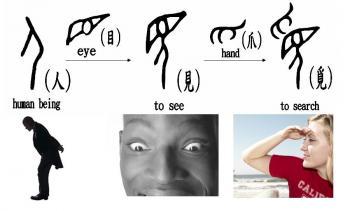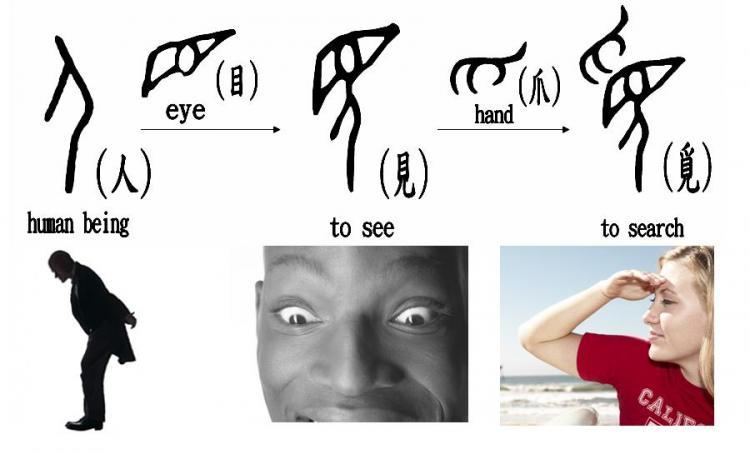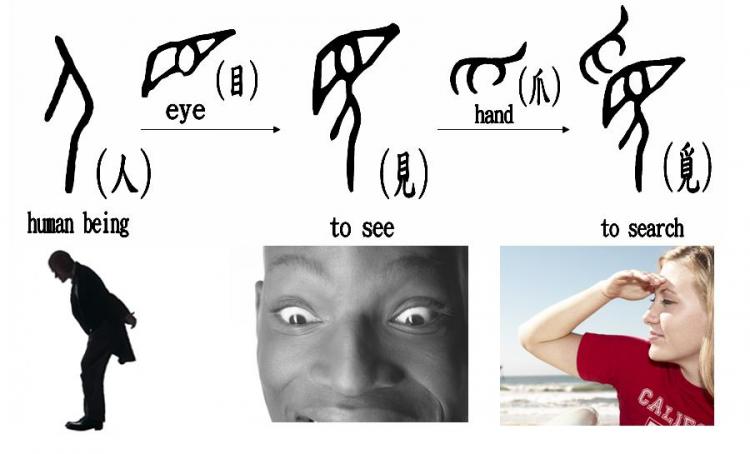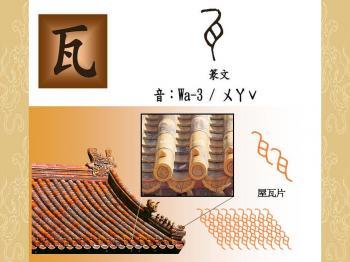How so? Take music notes as an example; they are images that are easy to learn and memorize, as each image is very intuitively descriptive. The Chinese characters, like music notes, were originally a composition of images brought together to represent a particular meaning. Once you learn the meaning of basic components, the more complex characters become easier to understand. For instance, “見” is composed of “人” (human) and “目” (eye). In this character the eye was emphasized in the character and thus represents the eye of a person, or “to see.” Additionally, the character “覓” is a “爪” or ‘hand’ on top of “見”. It shows the gesture of covering the eye with a hand to provide shade from the bright sun, and thus represents “to search.”
These basic images are symbols. Chinese characters are composed of one or multiple symbols. Mostly, two or three symbols, and normally no more than five, make up one Chinese character. With this new knowledge you may find it surprising that the Chinese ancestors actually used images to spell out a word.

There are approximately 250 basic symbols in Chinese, called radicals, that represent images of objects in nature and life. Human features take up one-third of these basic symbols. There are also radicals with abstract meanings. This collection of images is easy to comprehend, and truly reflects the life and energy of our world. This unique feature makes learning the characters a simpler task.
This series of Exploring Chinese Characters uses the method of a detailed introduction of a symbol, followed by characters derived from that symbol. Readers will personally experience and sense the process of composing a character from simple to profound.
Culture is the soul and fundamental element in learning any language. How old is the Chinese language? Like Chinese culture, Chinese characters have evolved for over 5,000 years. Approximately 2,000 years ago the images transformed into sophisticated symbols along with an evolution toward easier to use writing tools. These symbols, while modified slightly, still maintained the original meaning of the images and became easier to write.

Of course, beginners may find it a challenge, requiring a certain amount of imagination. Therefore, this work includes images of the original Chinese characters found in oracle bone carvings and bronze inscriptions to provide the intuitive vision of the characters and facilitate learning. Thus, learning Chinese characters becomes an extension of your imagination rather than a conventional memory based process. Additionally, you’ll find these compositions entail the philosophy, life and concepts of ancient times, and help illustrate the genuine and traditional culture of China.
We suggest you learn the basic symbols first, and then try to understand the characters within the concepts of the composition. This way, learning Chinese characters will become both easy and profound.
What awaits you is a journey full of culture and imagination.




